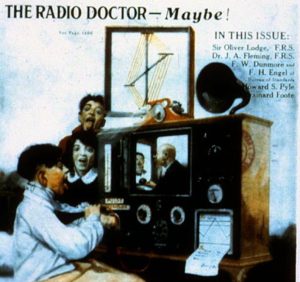After a year of experimenting through another iteration of a telehealth journey, using telehealth as a primary option among quarantine and social distancing; the verdict is out and telehealth has a permanent seat at the table. The undeniable benefits of convenience brought by telehealth – paired with the revelation that telehealth can provide highly personalized care – really turned the tables on how we think about our health system in general.
Let’s take a look at some of the hurdles, and look ahead to the evolving benefits of a premium care solution that fits in the palm of your hand – the telehealth journey.
The Telehealth Journey
Perhaps one of the reasons telehealth has been so successful under the extreme circumstances of the recent past, is that it was created out of a need to provide care in extraordinary circumstances and across vast distances.
Telehealth first began as a way of providing medical support to remote, (and we mean really remote) locations. Like far-off islands, mountains, and space. Versions of telehealth have existed among exploration groups, the military, and missionary teams for years.

Image source NIH.gov The cover of Radio News magazine, April, 1924.
Even as early as the 1920’s, the public has gravitated toward the idea of medical care from the convenience and comfort of their living rooms. Which perhaps is a more familiar attitude towards wellness harkening back to the 1800’s when Doctors came directly to their patient’s homes.
Modern Medicine & Technology
Radio wires and cumbersome antennae are not cluttering the devices of American homes. Aside from convenience, telehealth is becoming widespread thanks to the natural partnership between the technological advances in medicine, patient management, and personal electronic devices.
Evolving Benefits of Telehealth
Telehealth is an educational medium as well as a vehicle for providing healthcare. Through networking, analytics, and alert structure; telehealth is able to provide information, schedule therapies and self care, and connect patients to public health benefits and resources.
Better Together
As different aspects of healthcare evolve and are incorporated into the telehealth journey and spectrum, it’s critical for ease-of-use to keep telehealth assets together in a single portal. An all in one platform means a few things, here’s the short list.
For Patients:
- Easy accessibility to the portal itself. Is this a website? An App? Does anything need to be downloaded? Is it available in more than one language?
- Connectivity resources and contacts are built into the app
- The Platform provides relevant educational resources related to the patient’s care program
- Follow-ups and appointments can be scheduled and conducted via video with little effort
- Patients can track their own care progress and provide input on their own wellness
For Care Providers:
- Patient data is able to be connected and accessed through the portal
- Appointments and transportation can be scheduled and care plans can be outlined
- Patient data can be analyzed and organized based on risk assessment
- Security is a priority to protect data within regulations and HIPAA compliance
- Actions within the platform are logged for auditing
- Integrates with a larger more robust software suite
Evident Success
In a study conducted at Oregon Health & Science University, “the number of digital health visits ballooned from 1,100 in February to nearly 13,000 in March, and all 1,200 ambulatory faculty were able to conduct virtual visits by April 3, 2020”
There’s no doubt that the telehealth journey is still growing in use with one of the key benefits being that it is a quick to implement solution. Though some hospitals were better prepared pre-pandemic with a more technical infrastructure, the solution of telehealth is extremely scalable regardless of an individual’s comfort level with technology, or a lack of an existing virtual health network.
Preparing for Hurdles
The telehealth journey has not been a challenge free process and there are still hurdles to address. According to the Becker Hospital Review:
Over the next five years, one of the biggest hurdles for new virtual care and telehealth technology will be the governance structure at health systems. It will be essential for providers to partner with vendors to make sure new technology and virtual care initiatives serve the patient population equally.
Networking is key, and selecting a telehealth platform to work with that has connections with vendors and public health resources is the only way to fly. We can see a growing need for the convenience of built-in scheduling to manage multiple providers, payors, and patient plans, but organization is only a single ingredient.
We project that most telehealth hurdles can be overcome with smart data management and analysis. Dashboards make it easy to navigate through analytics, and a seamless integration with software makes a one-stop telehealth portal secure and reliable.
Curious to Explore?
The world of telehealth has many winding paths, but like we said – we’re better together. Reach out to us today to schedule a demo and learn what a care-oriented telehealth solution can do for you.








Recent Comments